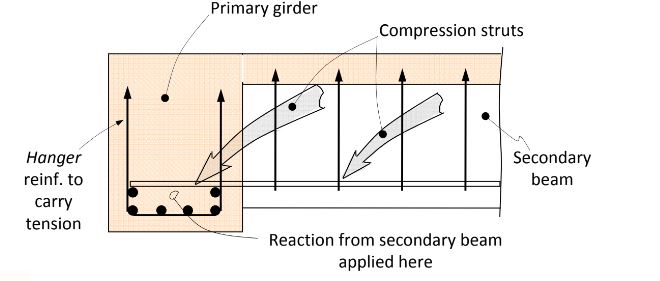Quence
Structural
- Jul 16, 2018
- 84
Please see attached image. In airports and open hallways and malls.. you can often see long big secondary beam ends framing into girders. I'm concerned about the details of the anchorage and hooks. This is not often mentioned in structural books. Do you make the hook detail at the edge of the girder? I'd like to know the behavior of the vertical part of the hook.. would the forces be to the left or right? Won't it spall the concrete cover to the left?

